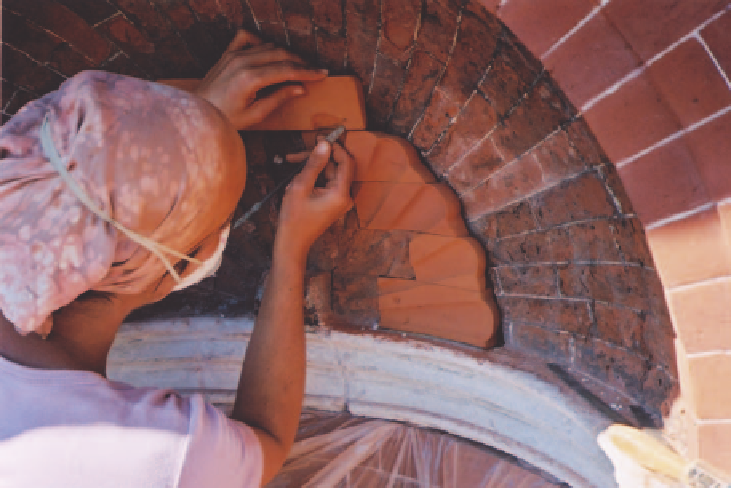Agriculture Reference
In-Depth Information
Figure 91
Final
in situ
adjustments
to the carved scallop
shell boss prior to
building it in. (Courtesy
of Emma Simpson)
2 parts washed sand
1.5 parts Burnt Sienna natural earth pigment
1.5 parts Yellow Ochre natural earth pigment.
With conservation works having been completed, the pediment and niche had
regained structural stability as well as the visual strength provided by re-estab-
lishing the clear lines of the arch intrados and extrados and the niche reveals.
The fine crispness of the Portland stone carvings re-emerged and the contrast
between the monumental whiteness of the stone and the red glow of the gauged
brickwork was enhanced, helping to bring the building back to life (Fig. 92).
Garry Carter and I carried out this project whilst working for Nimbus
Conservation Ltd. Although we are both qualified bricklayers to NVQ level
3 standard, the skills needed for this type of project were not covered in our
initial training. We had both pursued further training in order to take on
specialist tasks such as gauged work. The training in gauged work and its repair
we received from Gerard Lynch was vital to the success of our work at Eltham
Orangery. These courses enabled us to work out the geometry to produce
drawings and templets for the replacements and to have an appreciation of the
historical context of this type of work. We also gained a deeper understanding
of the materials and tools through observation and practical experience in his
workshops. The opportunity to practice cutting, rubbing and fixing on these
courses was invaluable.
The process of carrying out this project developed our skills further as we
came across problems that we had not anticipated. Having the chance to
deepen our knowledge through direct experience left us in a better position to
meet the challenges of the next job.

